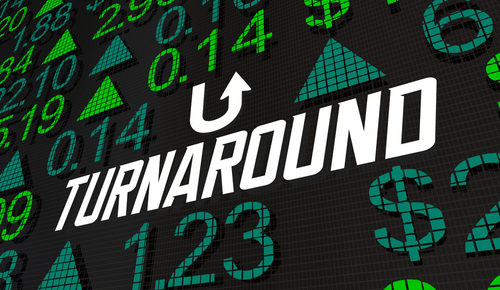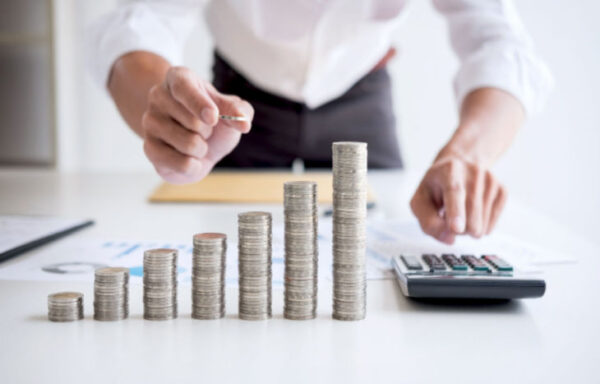What You Ought to Do as a Successful Investor
Ask the typical investor what he or she should be doing, and they will typically answer with something like “growing my portfolio” or “increasing my net worth.”
That’s exactly right.
Unfortunately, too many investors don’t have as much success as they’d like because they’re going about it the wrong way.
Click here to watch Alex’s latest video update.
Let’s take a look at the big picture. What should you do as an investor?
- Understand the true state of the world.
- Recognize what you can and cannot control.
- Capitalize on profitable trends.
Let’s begin with understanding the true state of the world…
Pick up a newspaper, turn on the news or browse the internet, and you’ll quickly confront words and images creating the impression that we live in a dystopian world full of war, terrorism, crime, poverty, corruption, political dysfunction, racism, sexism, economic inequality and environmental degradation. On top of that, the mainstream media keeps telling us that the United States has done a uniquely bad job of handling the coronavirus outbreak.
Don’t these problems really exist? Of course they do.
What’s invariably missing is any kind of context or perspective. The news media makes no attempt to paint a faithful depiction of the lives most of us lead.
For example, war between nation states, civil wars and terrorist incidents are all down.
Violent crime, domestic violence, child abuse, divorce rates and even abortions are also down.
We in the West work shorter hours, have more purchasing power, enjoy goods and services in almost limitless supply, and have more leisure time than ever before.
The human life span has nearly doubled over the past hundred years.
Living standards are the highest they have ever been.
Literacy and education levels – even IQs – are at all-time highs.
Science, technology and medicine are revolutionizing and saving our lives.
All forms of pollution – including greenhouse gases – are in decline.
Polls show that racist, sexist and homophobic views are held by a distinct minority of Americans and have been declining for years.
And economic inequality is far less of an issue after adjusting for taxes (the top 5% of income earners pay more than half of all income taxes), government transfers (like food stamps, welfare payments, subsidized housing and Medicaid) and growing consumption equality.
Let’s take a closer look at this last issue because it’s important, but not widely recognized or understood.
Thanks to greater efficiency, increased supply and the development of substitutes, many consumer purchases are cheaper than ever when measured by how much work it takes to acquire them.
For instance, I paid nearly $1,000 for a Motorola StarTAC cellphone when it came out 24 years ago. Needless to say, it had no video camera, GPS or internet browser. But it was state-of-the-art for its time.
Today you have a smartphone in your pocket that is incalculably better and more powerful – and it cost a fraction as much.
I walked into a Best Buy 15 years ago and bought the first large-screen, flat-panel TV I ever saw. It cost nearly $9,000.
Friends and family members who came over were amazed… for a few months. The price soon began to plummet.
Today you can go to Walmart or Costco and pick up a bigger and much higher quality set for about $400.
But it’s not just electronics that are better and cheaper.
The Cato Institute created the Simon Abundance Index, named after famed economist Julian Simon.
It reveals how the average time price (cost in terms of human labor) of 50 basic commodities – from sugar to beef to natural gas – fell by 72.3% between 1980 and 2018.
In other words, the amount of time it took the average person to earn enough to buy one “unit” of that basket of commodities fell by almost three-quarters over the last four decades.
As I often note, Americans today are living longer, healthier, safer, richer, freer lives than ever before.
If you recognize this, you’re more likely to be a successful investor.
If you don’t, you aren’t. It really is that simple.
In my next column, we’ll consider a second and equally important thing every investor should do: Recognize what you can and cannot control.
About Alexander Green
Alexander Green is the Chief Investment Strategist of The Oxford Club, the world’s largest financial fellowship. For 16 years, Alex worked as an investment advisor, research analyst and portfolio manager on Wall Street. After developing his extensive knowledge and achieving financial independence, he retired at the age of 43.
Since then, he has been living “the second half of his life.” He runs The Oxford Communiqué, one of the most highly regarded publications in the industry. He also operates three fast-paced trading services: The Momentum Alert, The Insider Alert and Oxford Microcap Trader. In addition, he writes for Liberty Through Wealth, a free daily e-letter focused on financial freedom.
Alex is also the author of four New York Times bestselling books: The Gone Fishin’ Portfolio: Get Wise, Get Wealthy… and Get On With Your Life; The Secret of Shelter Island: Money and What Matters; Beyond Wealth: The Road Map to a Rich Life; and An Embarrassment of Riches: Tapping Into the World’s Greatest Legacy of Wealth.







